Outback Moon

The moon seen from a camp in the Australian outback.
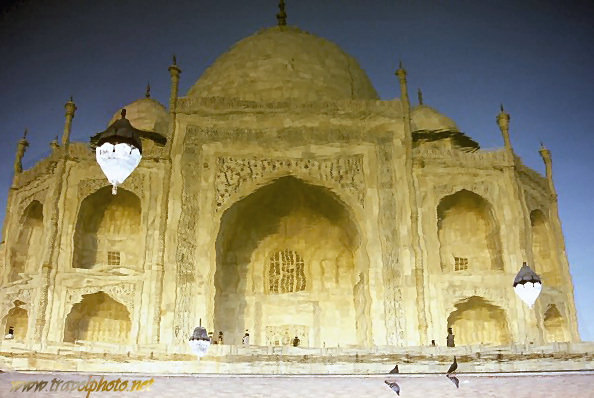
Well, even before I took this photo, I envisaged turning it around in the slide tray.
Hard to say which version I prefer, this one where I uplifted the building or the normal view of the reflected Taj Mahal that is upside down, because I did not turn it…
Everything clear?

This was taken from the ruins of the upper town in Monemvasía.
For more on this magic place have a look at my earlier posts “Greek Gibraltar?” and “Greece: Monemvasia“

How to take pictures when you are in a fascinating museum where only the bare minimum of light falls on the archaeological treasures, - achieving a truly mystical atmosphere?
Normally, I’d just use my tripod, - but this was forbidden as was the flash.
My only “high-speed” film was a 100 ASA Fuji Provia (I usually use 50 ASA Velvia).
So I was a bit apprehensive when I unfolded the small reflector I bought for portraits - sure enough, the wardens looked uneasy, but this was not expressly forbidden, - so I could shine at least a little bit more golden (or silvery, depending on the side of the reflector used) light on the pieces I found most interesting.
It sure seems to have worked!
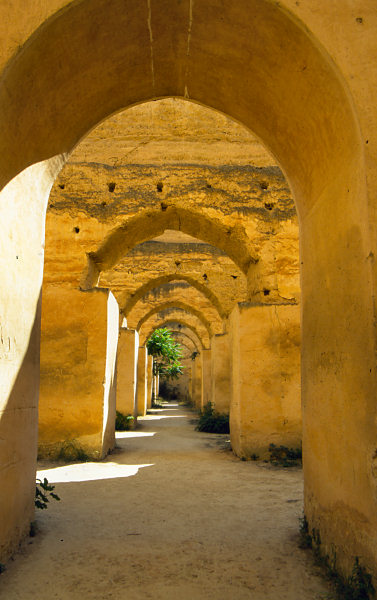
Very picturesque: the old granaries of Heri es Souani in Meknes.

When looking for reflections of the Louvre in the windows of the Louvre, I realized a little figure sitting precariously high under the windows of the world’s most famous museum.
Only when looking at him through my tele lens, I realized that this was art - not suicidal behaviour.
I wonder how many times a day the police are called to help?
Presumably it’s just a reference to Günter Grass’ Oskar Matzerath from the “tin drum”.

Enlarged view of the boy with his tin drum.

I have seen all sorts of squirrels in parks, but the chipmunks in Agra and other Indian cities were not the least shy.
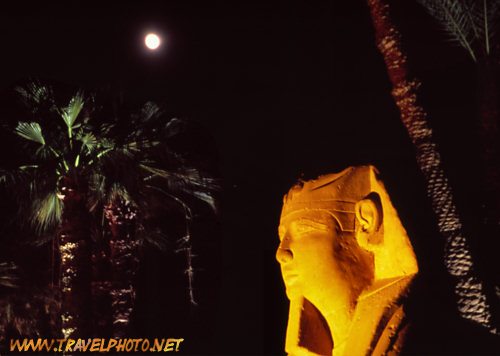
12 years after my last visit, I was fortunate to see the temple under a full moon - again!
This is one of the sphinxes that belonged to the avenue of sphinxes that once connected Luxor temple and Karnak.
Today, only small parts of this avenue are visible, - it must have been wonderful when it was still 3 km long!
The head looks very much like the head of Ramesses II at the front Pylon, that I photographed twelve years ago.
click to see a larger version of the photo.
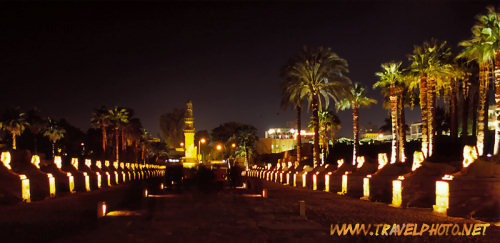
A photo of the avenue of sphinxes in the evening. There are two types of sphinxes here, the human-headed ones at Luxor and the ram-headed sphinxes near Karnak.
click image to see a larger version.
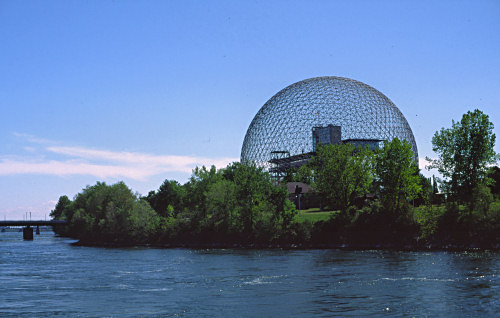
The Biosphere in Montreal, seen from the water.
The museum inside is very visible from this perspective.

Yet another shot of Loch Morlich taken at sunset on a rainy day in the Cairngorms.
Also see:
Boat on Loch Morlich, Rainbow in the Cairngorms
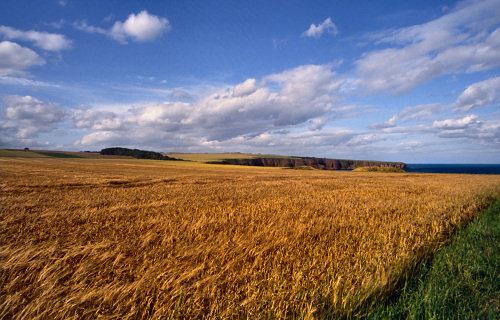
Somewhere between Dundee and Aberdeen, there is the small town of Arbroath.
This place is famous for its cliffs where you van watch colonies of puffins at the right time of year.
Even when there are no puffins, the views are breathtaking and walking a bit inland, you’ll see fields, cliffs and water.
Click the image for a larger version.

The archaeological site of Mystras is vast and one should devote at least several hours (better: a full day) to exploring it.
Getting there involves a steep climb but the effort is rewarded by many beautiful views and, of course, the wonderful byzantinic architecture including a castle, several important churches, palaces, convents a museum and some normal houses.
I especially enjoyed the scenic layout and the many overgrown paths, old stairs and dorrways.
Like with many transcribed places names, quite a confusion exists concerning the spelling of the Greek place name ??????? in our alphabet: Mystras, Mystra, Mistra, Mistras.

From the lion’s paws forming the entrance, it is a steep climb to a plateau 200 metres above, where you can see the remains of the ancient fortifications.
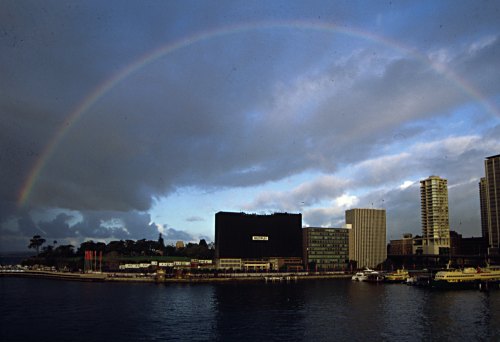
This was taken on the same occasion as my rainbow over the Sydney Opera house picture.
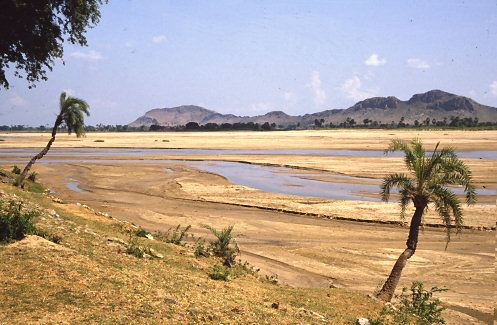
Bodhgaya is a pleasant town situated at the shores of the Niranjana river.
There is, however, one thing that sets this place apart from all others: here, under a Bodhi tree, prince Siddharta achieved enlightenment and became “the Buddha”.
So, Bodhgaya is one of the holiest sites for Buddhists and there are monasteries from just about any Buddhist country.
Very interesting to visit, - but exploring rural India is just as rewarding!
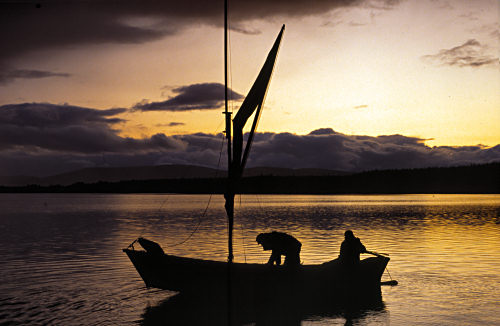
A fishing boat on Loch Morlich in the Cairngorm National Park.
This picture was taken only a few meters from “Rainbow in the Cairngorms”.

A small tower in Torremolinos. The sign says “Hidroelectrica del Chorro”.
This was the first company producing electricity in Málaga.
“El Chorro” is a small village near the dam and hydroelectric plant in Antequera, but the name also refers to the whole “Andalusian lake district” with its famous climbing opportunities.
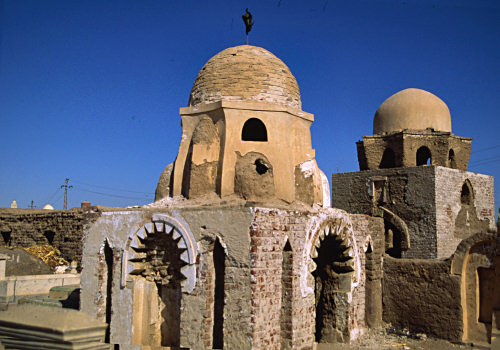
Right in the centre of Aswan, between the Nubian museum and the unfinished Obelisque, there is the Fatimide Cemetary with hundreds of graves, some of which date back to the 9th century (others are quite recent).
There are small children’s graves and big tombs for holy men. Hiring one of the “guides” at the entrance is well worth a small Baksheesh.
A rainbow appears over the forests near Loch Morlich in the Cairngorms (Cairngorm National Park, near Aviemore, Scotland UK).
I slightly enhanced the colours using a circular polarizing filter. Depending on the position of such a filter, it will either enhance the colours - or even eliminate the rainbow effect!
(A polarizer actually consists of two glass filters that are rotated against each other and is very useful for eliminating or enhancing all sorts of reflections)
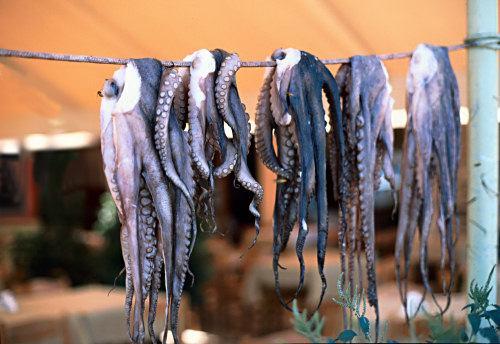
Everywhere around the harbour, you can see those lines full of drying octopus.
0.330 || Powered by WordPress